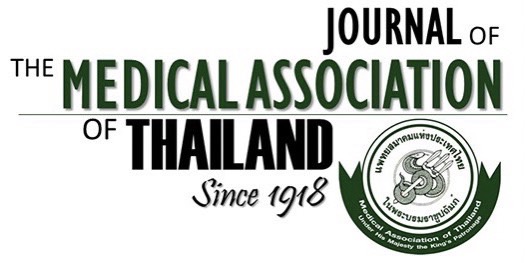Glycemic Control and Microvascular Complications among Type 2 Diabetes at Primary Care Units
Korapat Mayurasakorn MD, FRCFPT*, Nawarat Somthip NP**, Supak Caengow Msc***, Nahathai Chulkarat NP**, Molee Wanichsuwan MD*
Affiliation : * Division of Family Medicine, Department of Social Medicine, Samutsakhon General Hospital, Samutsakhon, Thailand ** Division of Nurse, Department of Social Medicine, Samutsakhon General Hospital, Samutsakhon, Thailand *** Office of Research Development, Phramongkutklao College of Medicine, Bangkok, Thailand
Objective : To determine the status of disease control and to compare the prevalence of microvascular
complications among type-2 diabetes in a primary care setting.
Material and Method: The authors performed a cross-sectional study of 287 diabetic patients from 13 primary
care units in urban areas of Thailand. The status of diabetic control was dominantly defined by HbA1C (A1C),
blood pressure (BP). Screening programs for microvascular complications included retinopathy and
nephropathy. Retinopathy used a seven-field stereoscopic retinal photography while nephropathy was
defined by a random urine albumin-to-creatinine ratio.
Results : The A1C of 41.3% of the patients was lower than 7% however, 80% of them used only low doses of
anti-diabetic drugs. The prevalence of microalbuminuria was 28.7% and macroalbuminuria was 5.7%, whereas
diabetic retinopathy was 15.1%. In multivariate analyses, nephropathy was significantly related to duration
of diabetes > 4 years (odds ratio 1.5, 95% CI 1.2-1.8, p < 0.001) and A1C > 8% (odds ratio 2.2, 95% CI
1.3-3.8, p < 0.05), while retinopathy was related to duration of diabetes > 4 years (odds ratio 9.5, 95% CI
1.17-77.8, p < 0.05).
Conclusion : The present study shows that primary care units provides patients with well-controlled diabetes.
Nonetheless, those type 2 diabetes patients have significantly higher rates of microvascular complications,
despite shorter diabetes duration and lower A1C. Type 2 diabetic patients in primary care unit should be
screened for complications and efforts should be done to reach optimal glycemic level, especially for individuals
with diabetes > 4 years.
Keywords : Blood glucose, Diabetes complications, Diabetes mellitus, type 2, Mass screening, Primary health care



